The capacitor
Following are information and questions on capacitors and capacitance.
Instructions:
For each question:
- choose the correct answer
- write down your answer.
Note:
- You can print this page and write your answers onto it.
A capacitor can be used to store an electrical charge.
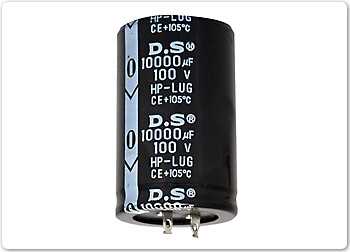
The unit for capacitance is the FARAD.
The capacitor shown has a capacitance rating of 10000µF. Capacitors can be used in many applications such as:
- induction motors
- fluorescent lighting
- protection against spike voltages
- radio tuning.
The following list indicates the components that make up the construction of a capacitor.
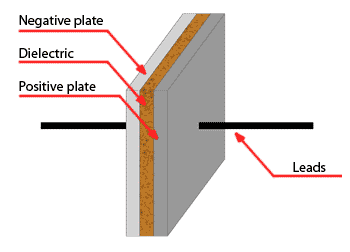
- Negative plate; when charged this plate has an excess of electrons. It therefore has a negative charge.
- Dielectric (between the negative and positive plate); the dielectric is an insulator.
Materials used as a dielectric include:
air
glass
mica. - Positive plate; when charged this plate has a deficiency of electrons. It therefore has a positive charge.
- Leads; the leads are conductors and allow the capacitor to be connected into a circuit.
The three factors affecting capacitance are:
- Size of plates; the larger the plates (more surface area) the larger the capacitance. This is because a greater electric charge can be stored on larger plates.
- Distance between plates; the closer the positive and negative plates are to each other, the more electric charge can be stored and therefore the greater the capacitance.
- Dielectric material; the capacitance value varies, depending on the material used as the dielectric. The greater resistance quality of the dielectric, the greater the capacitance value of the capacitor.
1. A capacitor is a device used to create an electric charge.
- True
- False
2. When a capacitor is charged it will have the same number of electrons on each plate.
- True
- False
3. How would the capacitance value of a capacitor change if its dielectric was replaced with a material with a higher resistivity rating?
- It would increase
- It would decrease
- It would remain the same
Charging a capacitor
When a capacitor is connected to a DC circuit, current flows in the circuit for a time period until the capacitor is charged. When the capacitor is charged, current ceases to flow. The capacitor when charged can be disconnected from the circuit and retain its charge. Look at the following diagrams and graphs to see the charging of a capacitor over a five second period.
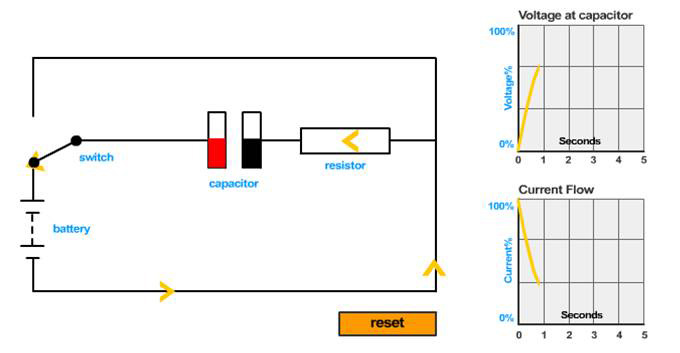
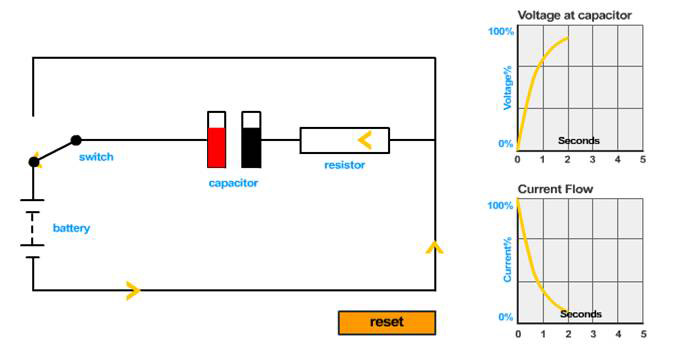
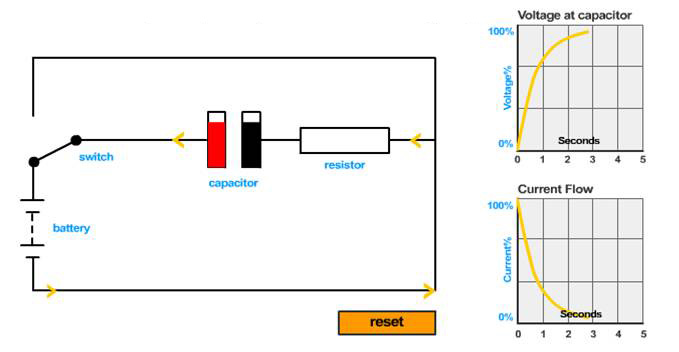
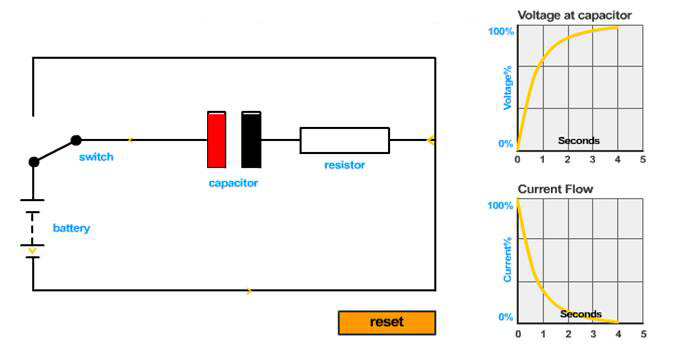
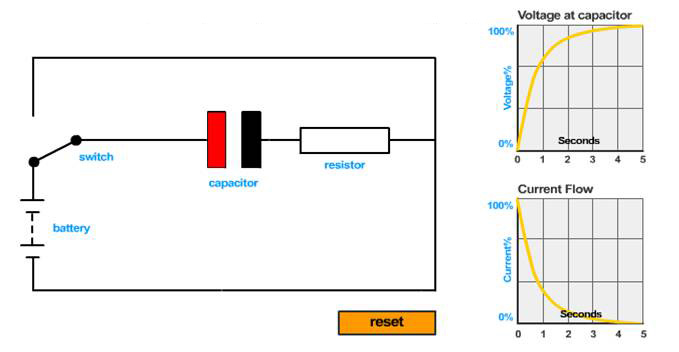 When the capacitor is initially connected to the DC supply the:
When the capacitor is initially connected to the DC supply the:
- current flow starts at it's maximum and gradually decreases to zero
- voltage across the capacitor starts at zero and rises to the supply voltage.
The charging process take a time period. The length of time taken to charge depends on the size of the capacitor and the resistance in the circuit.
Discharging a capacitor
Look at the following diagrams and graphs to see the discharging of a capacitor over a five second period.
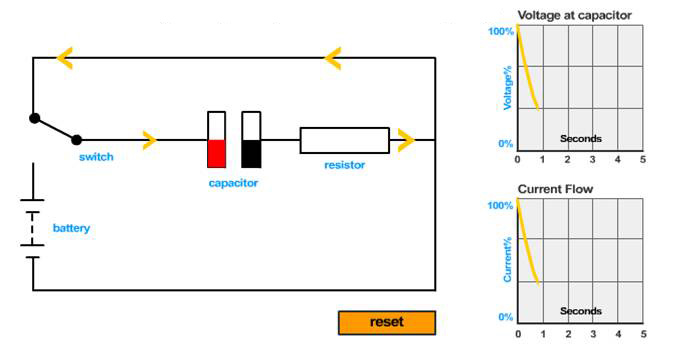
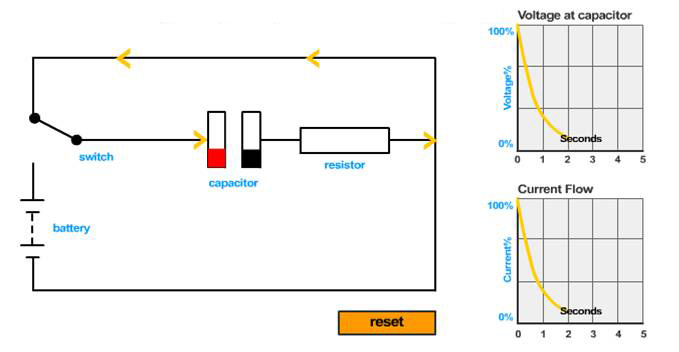

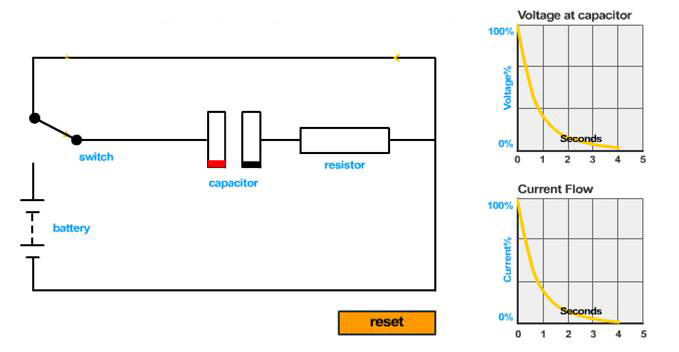
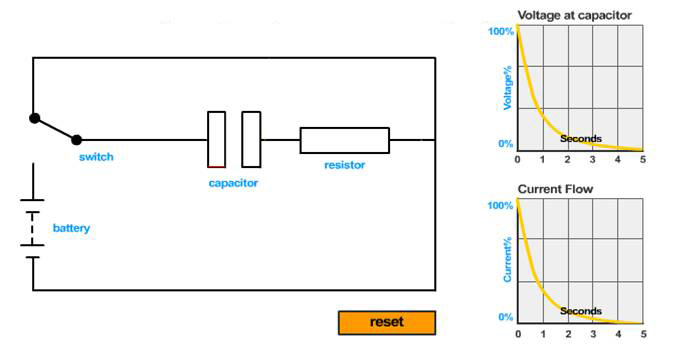
When the capacitor's terminals are bridged out:
- current flow starts at its maximum and gradually decreases to zero
- voltage across the capacitor starts at its maximum and gradually decreases to zero.
4. When a capacitor is being charged, does the current flow travel through the capacitor (across the dielectric) charging both the plates?
- Yes
- No
5. When a capacitor is connected to a DC power supply, current will continue to flow until the power supply is disconnected.
- True
- False
6. When is the current flow at a maximum during the process of charging a capacitor?
- The moment the power supply is connected.
- Just before the capacitor reaches fully charged.
- The current flow remains constant through the charging process.
7. How could you increase the time it takes for a capacitor to charge?
- Increase the resistance in the circuit.
- Decrease the resistance in the circuit.
- You can't change the time taken for charging a capacitor.
If you had trouble understanding the information or answering the questions in this activity, get more information from:
- Electrical principles section in Resources
- text books
- internet sites
- your trainer.
Repeat this Reinforcement activity or choose another topic from the menu.
When you have finished:
- show your answers to your trainer
- close this window and choose a new activity from the menu.